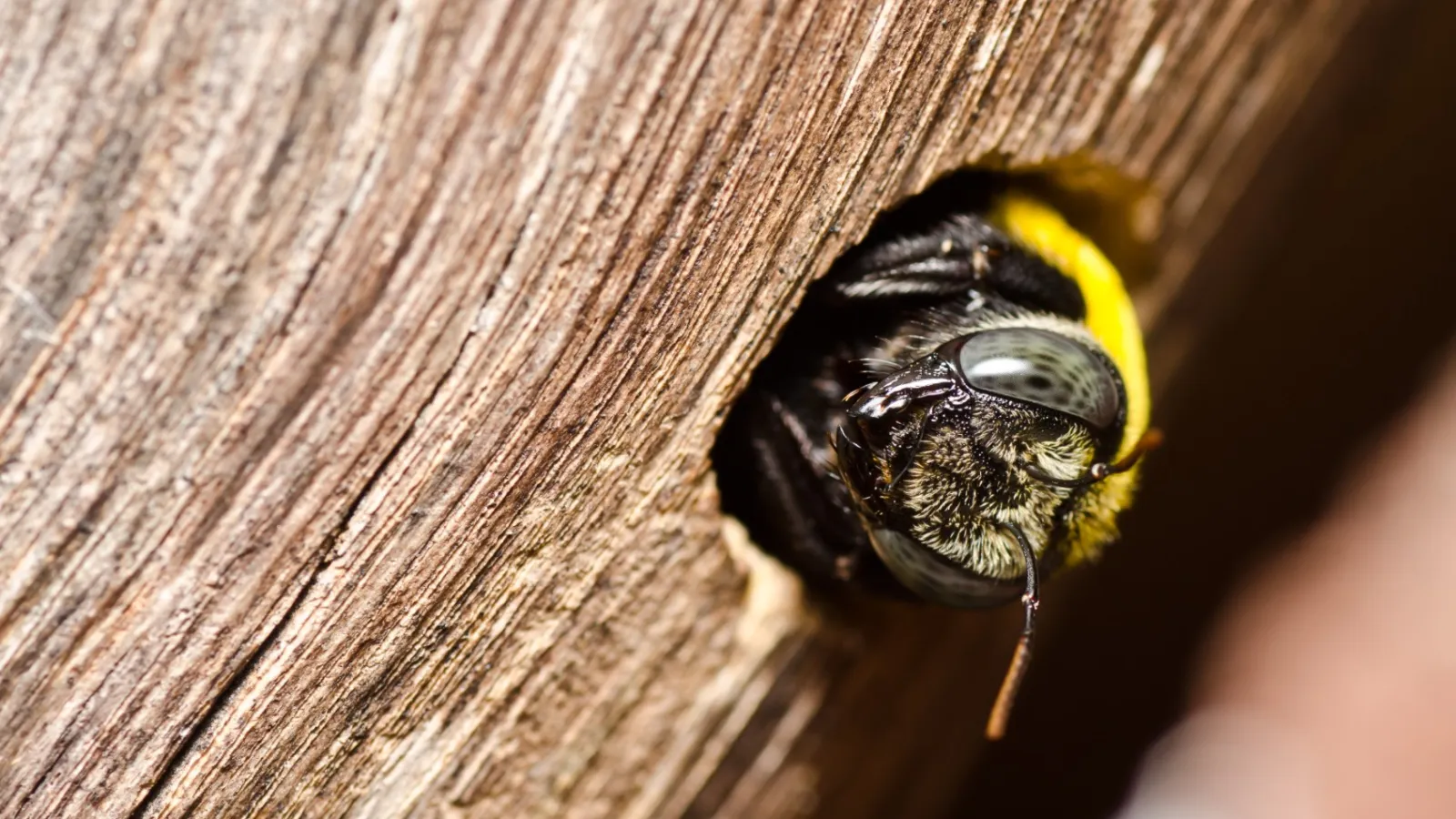
Carpenter Bees
Latin Name: Xylocopa
Carpenter bees are large, solitary bees often mistaken for bumblebees due to their size and appearance. However, unlike bumblebees, carpenter bees have shiny, hairless abdomens and a habit of burrowing into wood to create nesting sites. Carpenter bees are drawn to wood, especially untreated, weathered, or unpainted surfaces. They prefer softwoods like pine, cedar, and redwood, commonly found in decks, fences, siding, eaves, and outdoor furniture. If your home has exposed wood, carpenter bees may see it as an ideal nesting site.
Unlike termites that eat wood, carpenter bees excavate tunnels to create nests for their offspring. Female carpenter bees drill small, perfectly round holes (about ½ inch in diameter) into wood, then create a series of tunnels where they lay eggs. Inside these tunnels, they deposit pollen and nectar as food for their developing larvae.
Carpenter bees might not be as destructive as termites, but their burrowing behavior can lead to significant structural and aesthetic issues over time. Repeated infestations weaken wood, causing deterioration in decks, siding, and wooden trim. As the bees continue to tunnel and reuse old nests, the risk of structural collapse increases. Additionally, their presence can attract woodpeckers, which feed on carpenter bee larvae and peck at infested wood, causing even more damage.
Beyond structural concerns, carpenter bees also create unsightly maintenance issues. Their drilling leaves behind perfectly round holes and piles of sawdust beneath infested areas, while prolonged activity can cause wood to splinter or crack, leading to costly repairs. While male carpenter bees do not sting, females can sting if handled or provoked. Their aggressive hovering near entryways, patios, and wooden structures can be unsettling, making outdoor spaces less enjoyable.
If you need assistance with carpenter bees or any other pest, don't hesitate to reach out to the PestNow experts.
Similar Pests: Yellow Jackets, Wasps
FAQs About Carpenter Bees
What do carpenter bees do to wood?
Carpenter bees are solitary bees that tunnel into wood to create nests, not to eat it. Unlike termites, which consume wood, carpenter bees chew through it using their strong mandibles to excavate long, smooth tunnels where they lay their eggs and protect their larvae. These tunnels are usually drilled into untreated, softwood surfaces such as decks, fences, fascia boards, and siding. Over time, repeated nesting can weaken the structure, especially when generations of bees return to the same wood year after year.
When are carpenter bees most active during the year?
Carpenter bees are most active in the spring and early summer, especially during the daytime. That's when females emerge, mate, and begin drilling nesting tunnels in wood.
What’s the best way to prevent carpenter bees from coming back?
To prevent carpenter bees from returning:
-
Paint or seal all exposed wood surfaces
-
Replace damaged boards with composite or pressure-treated wood
-
Install physical barriers (like metal flashing) on vulnerable areas
-
Remove attractants like stacked lumber or untreated outdoor wood